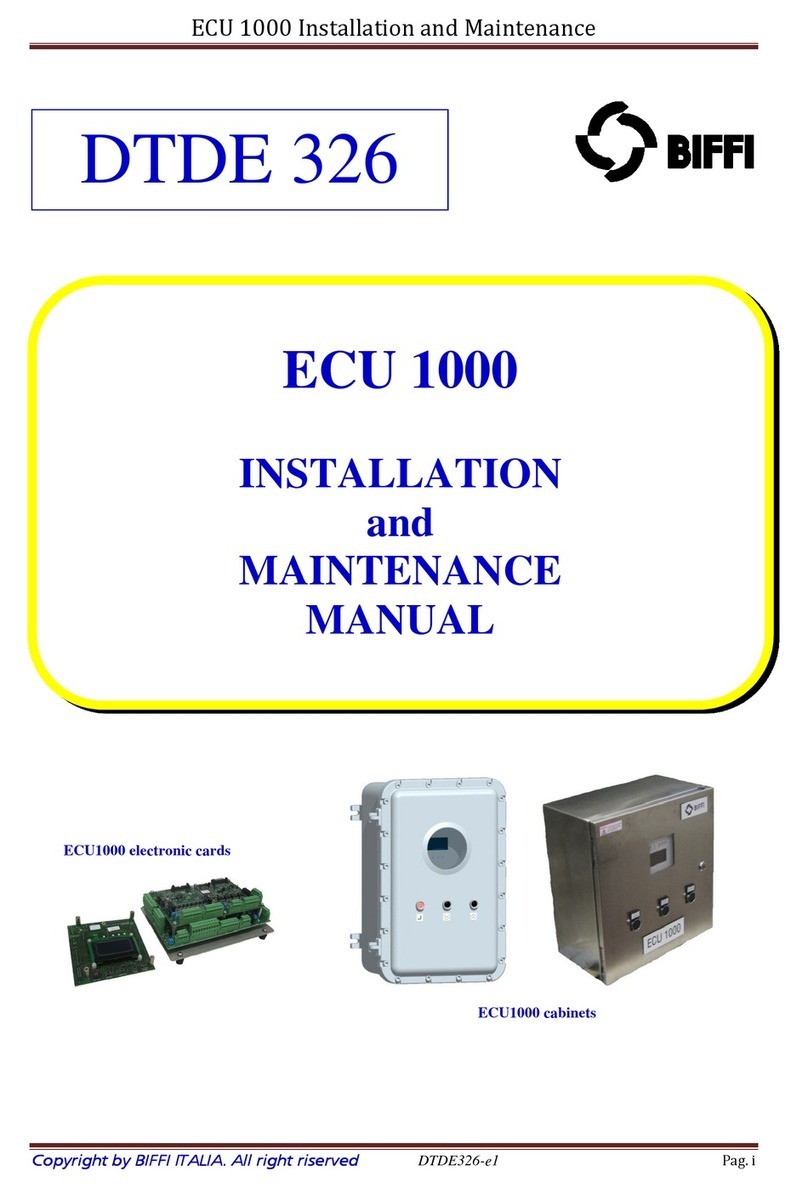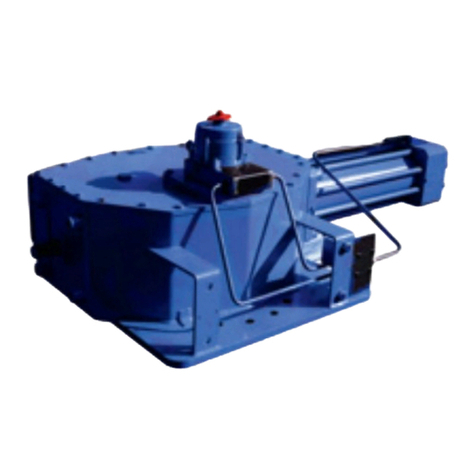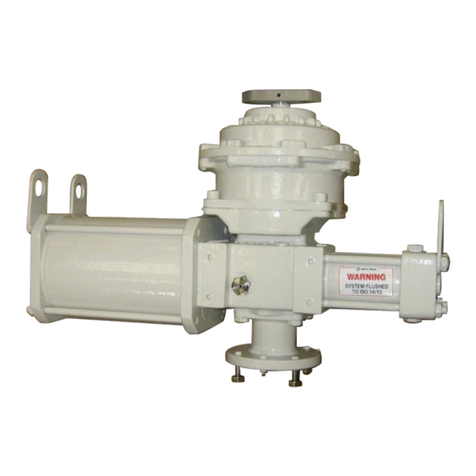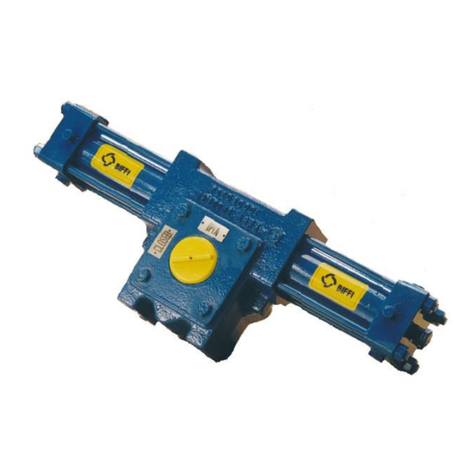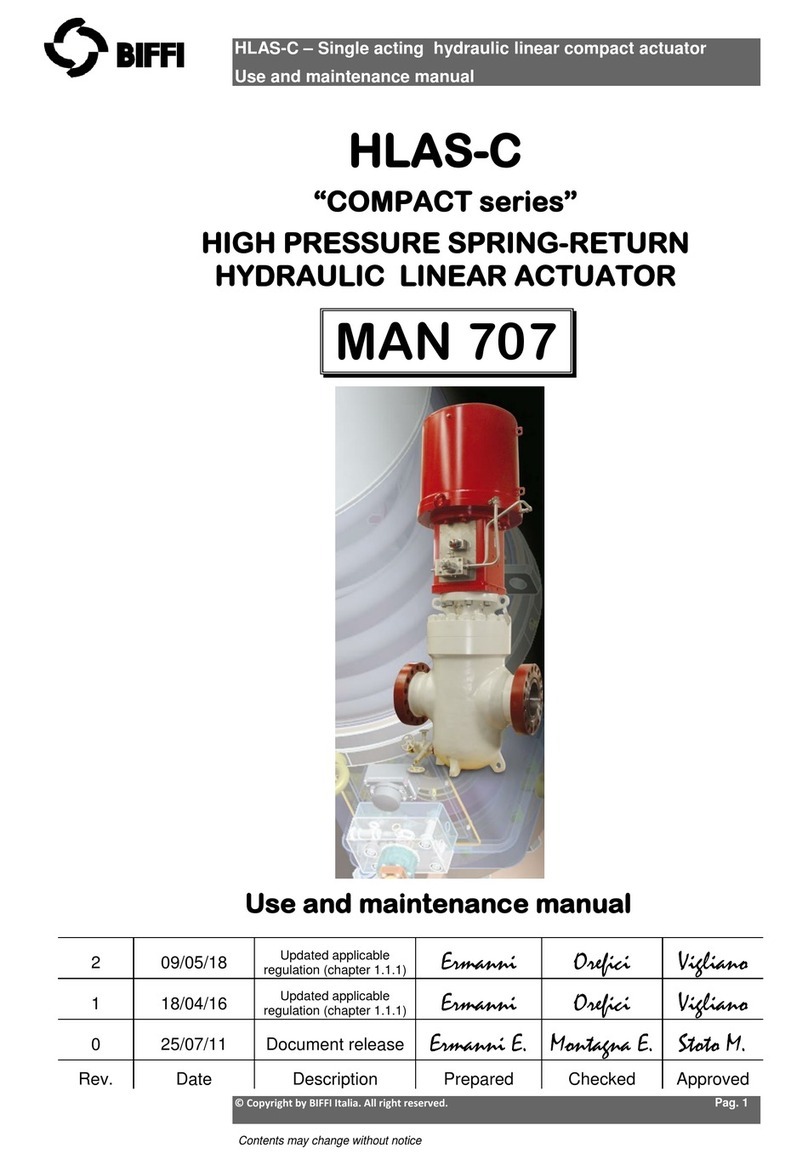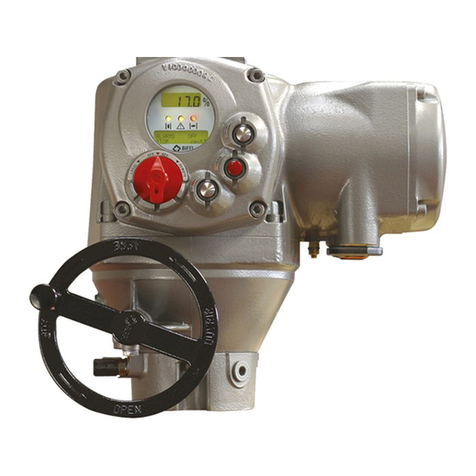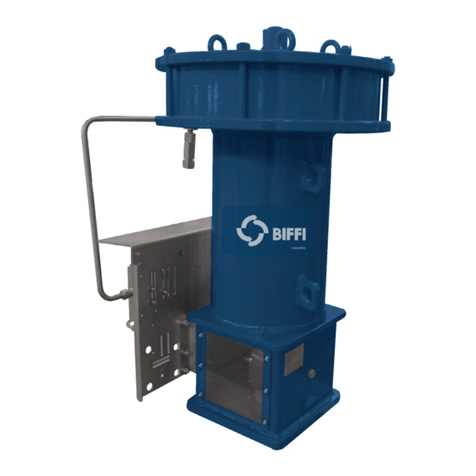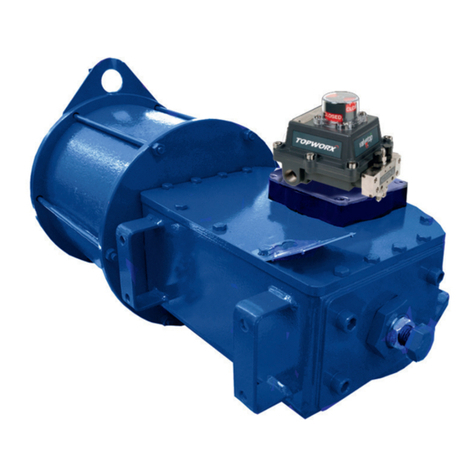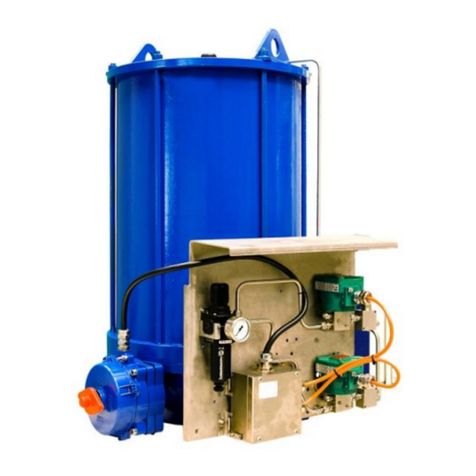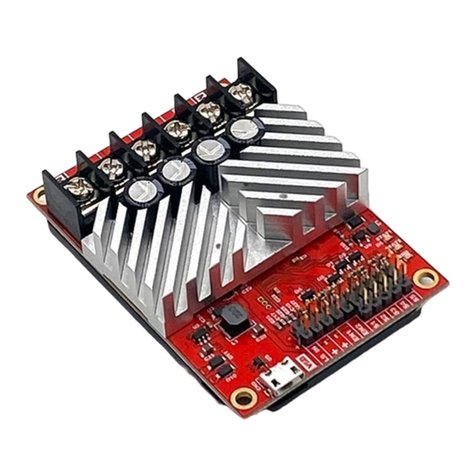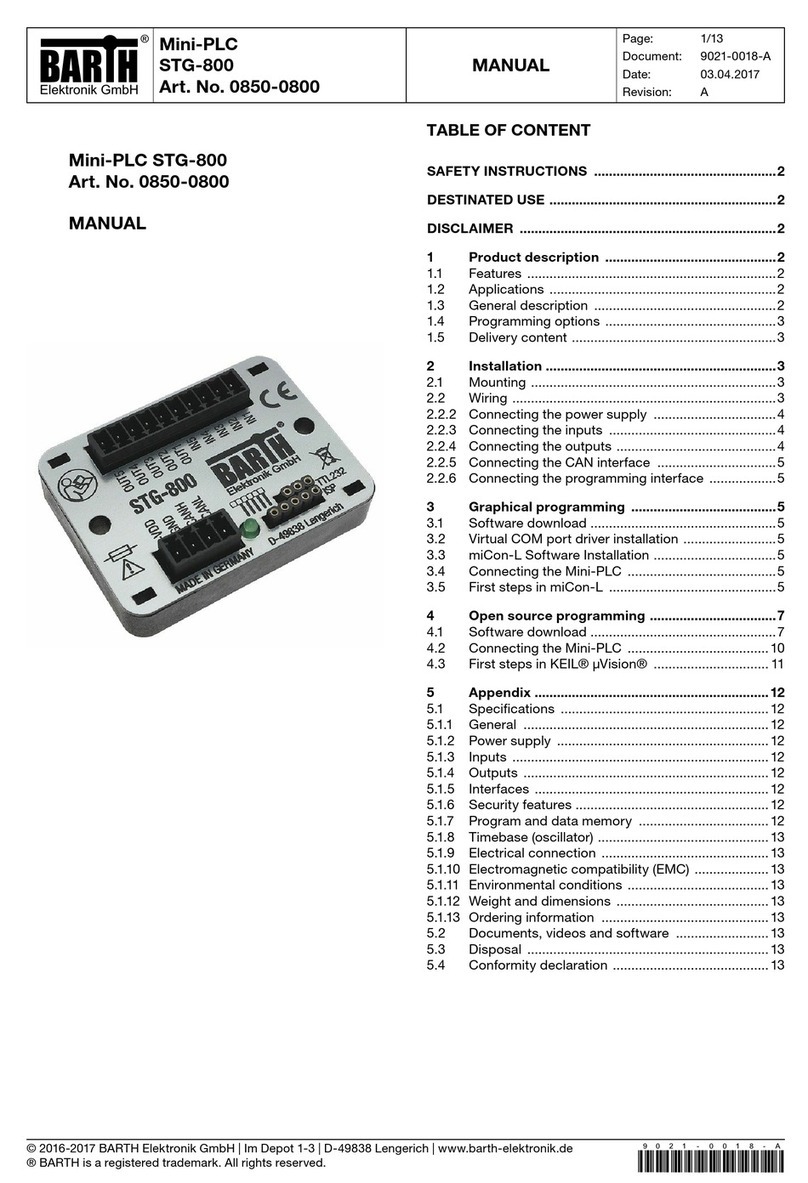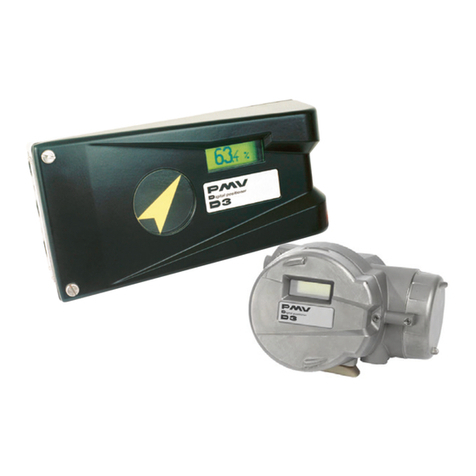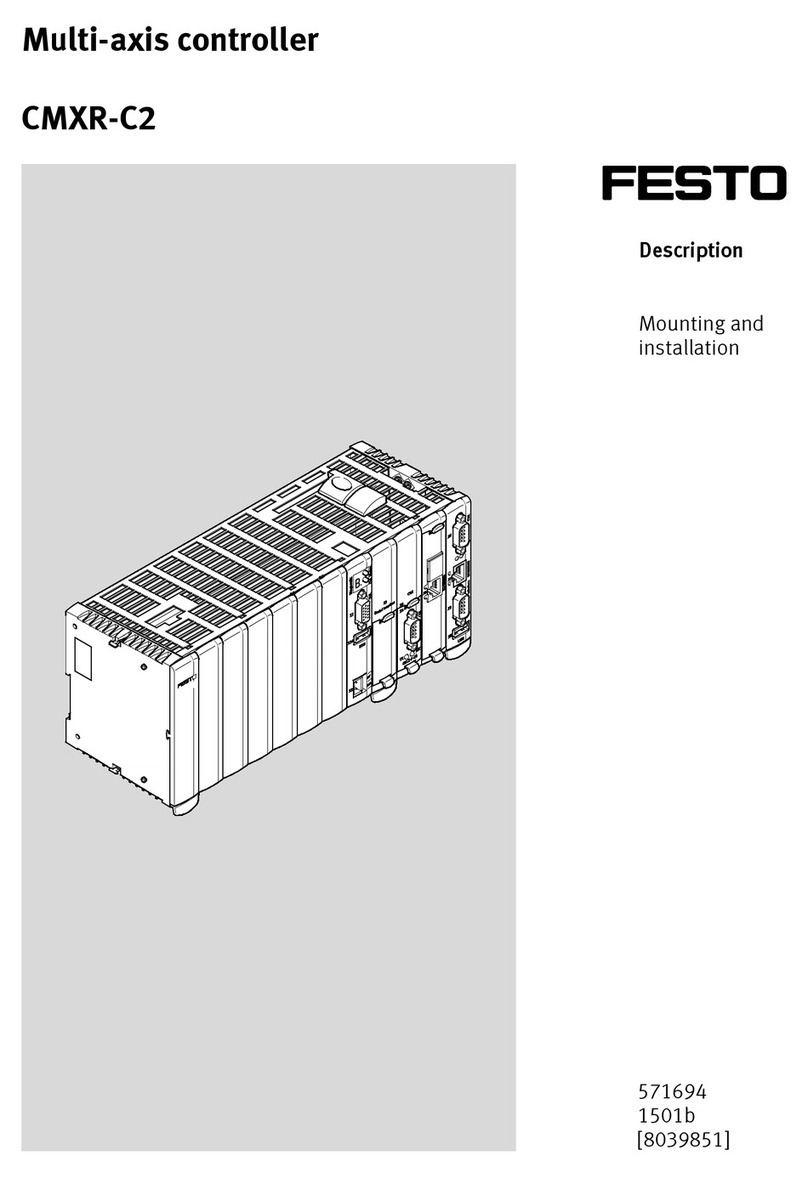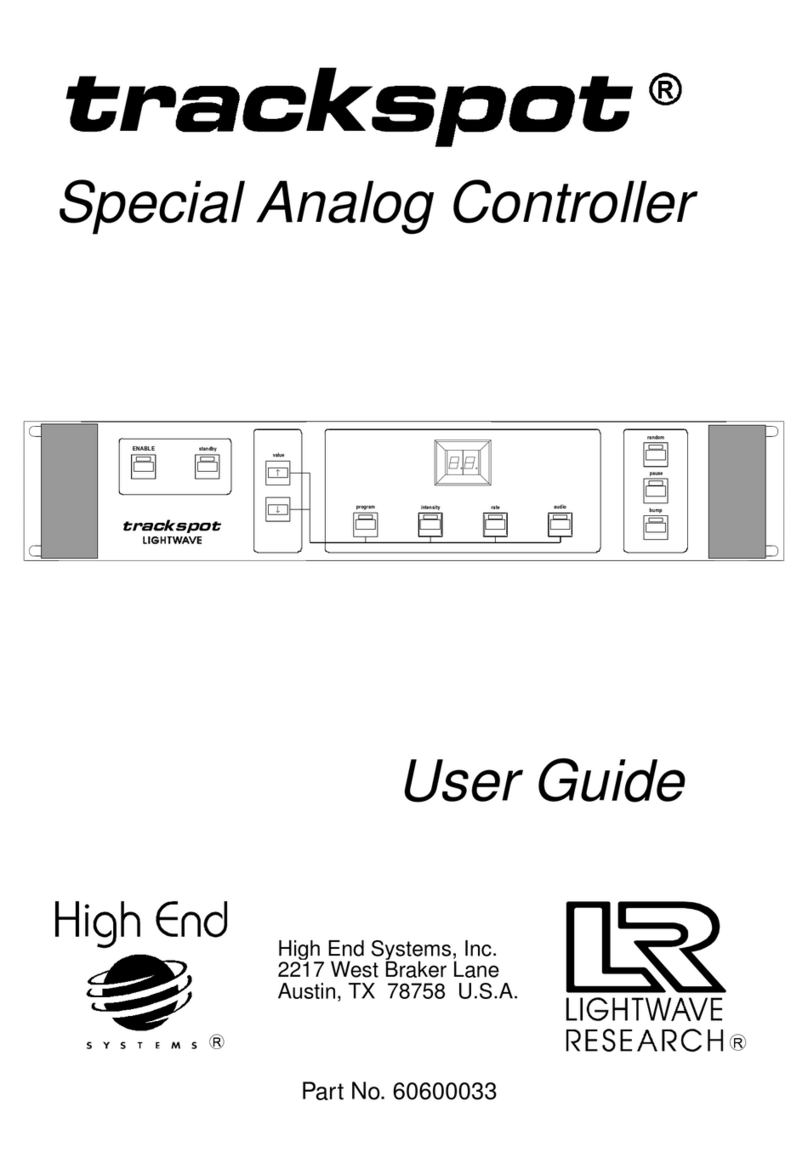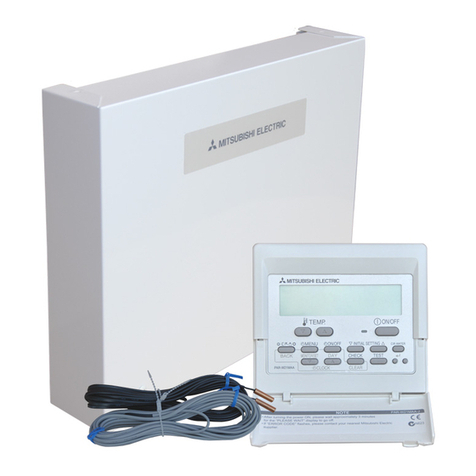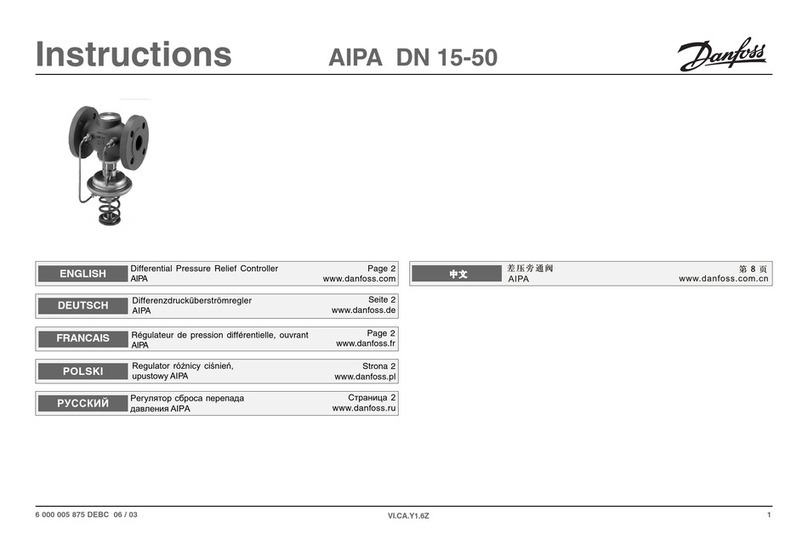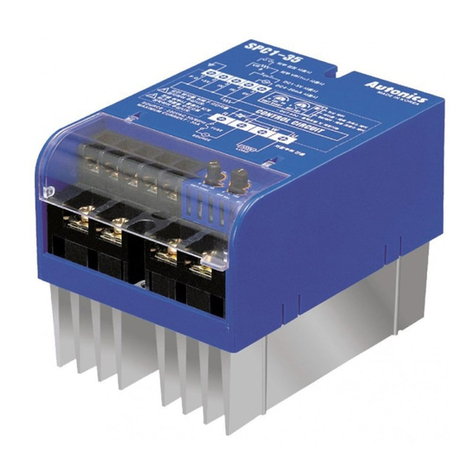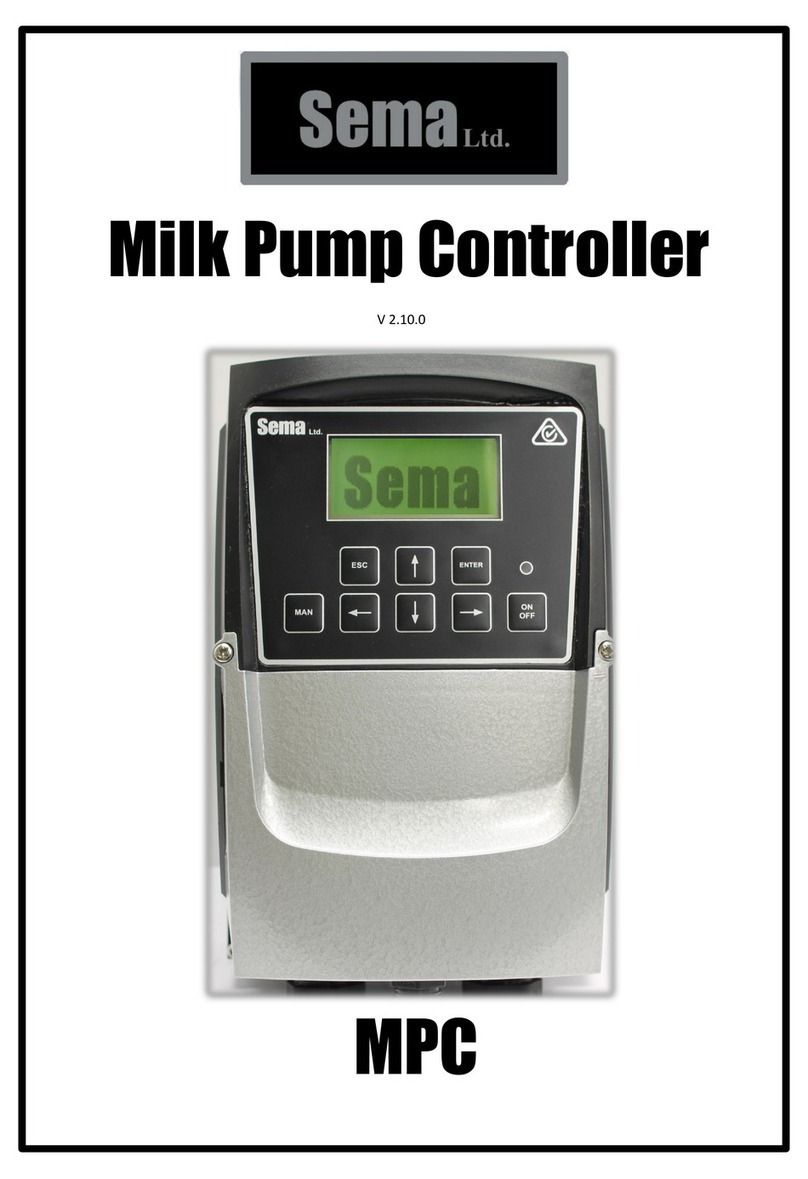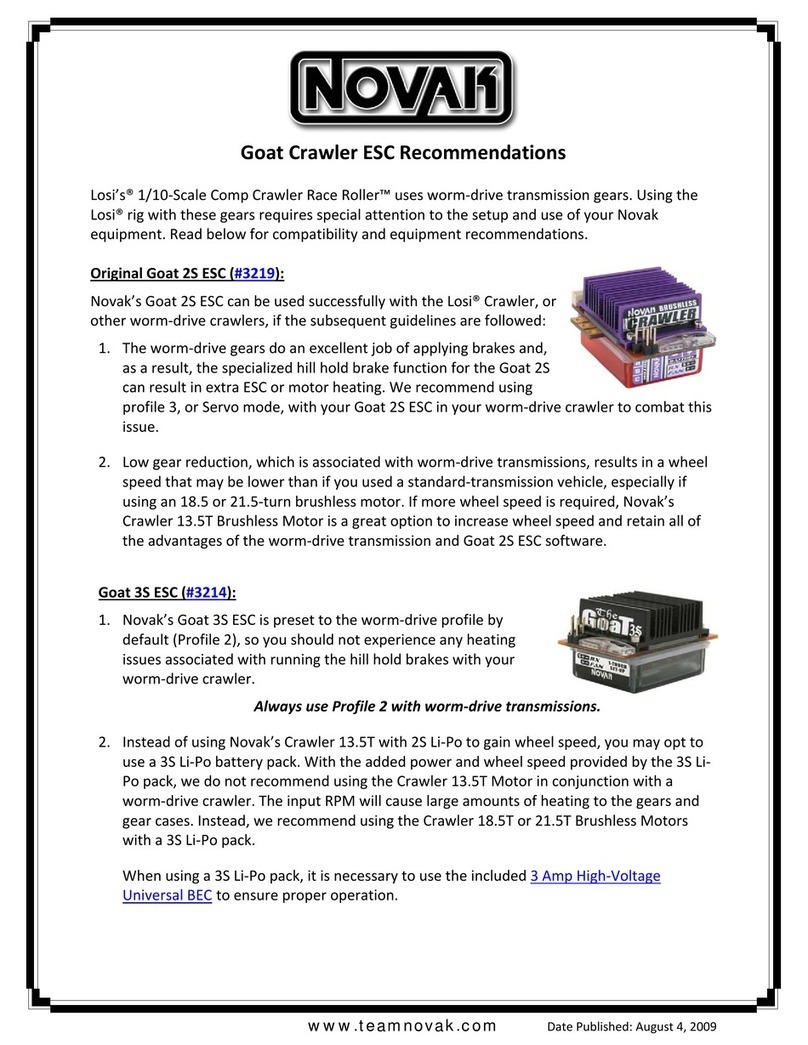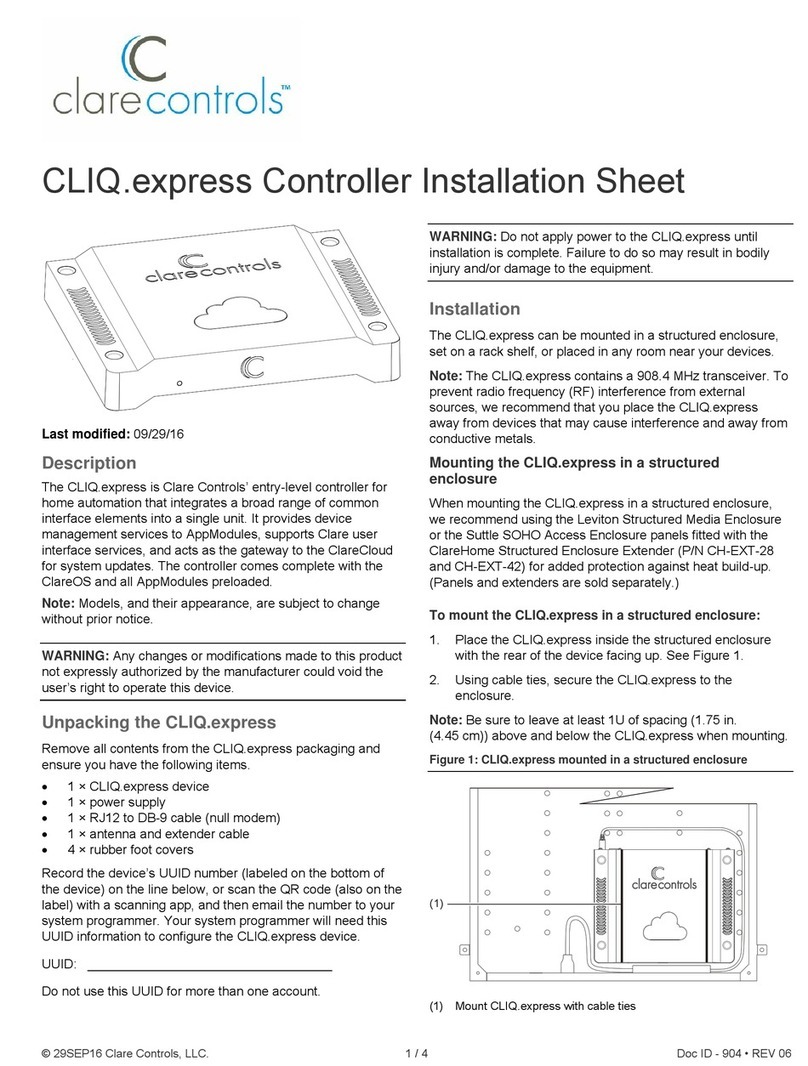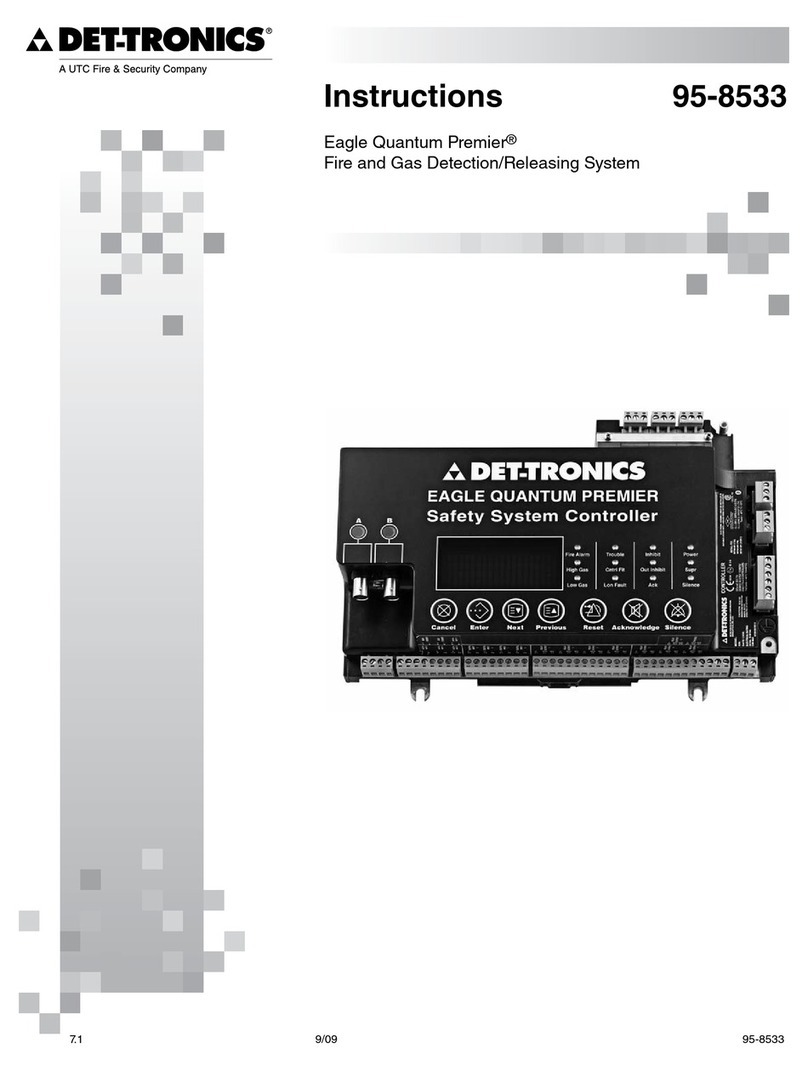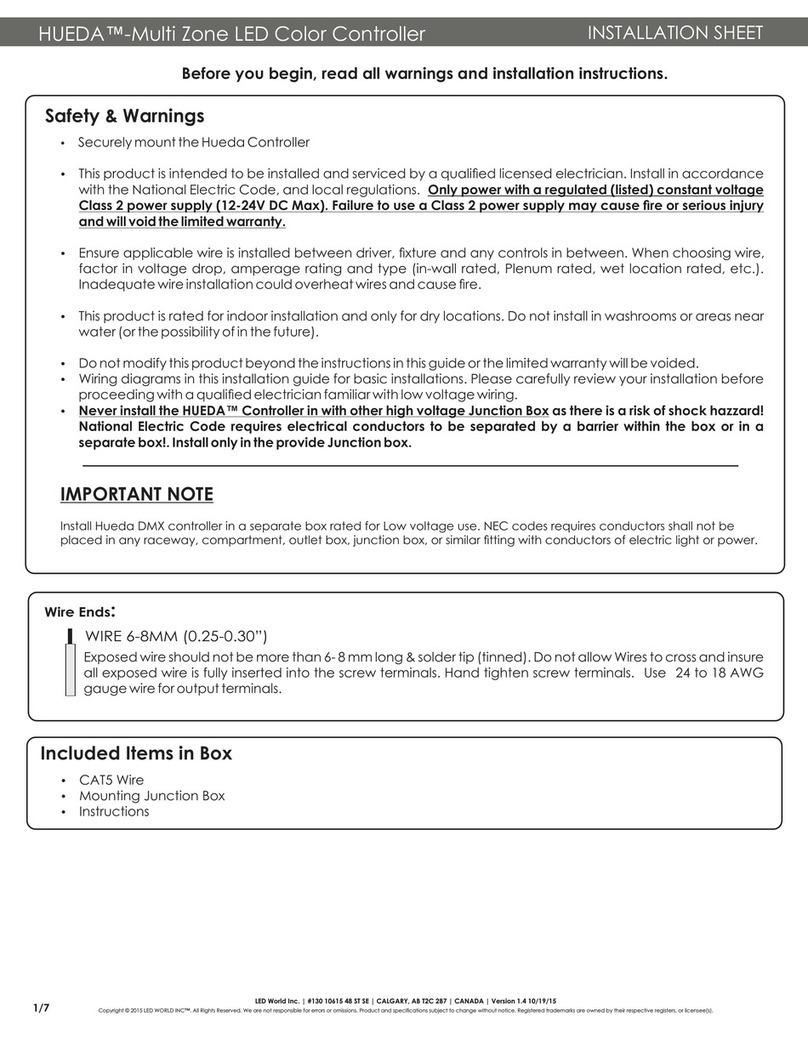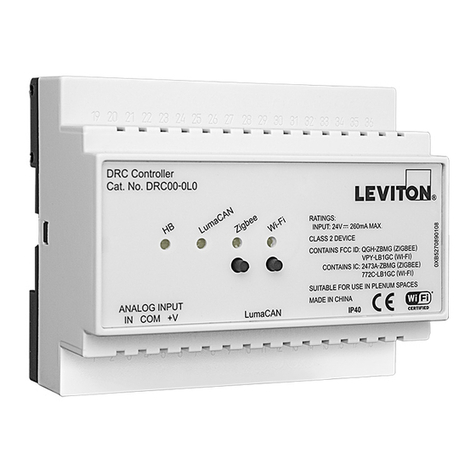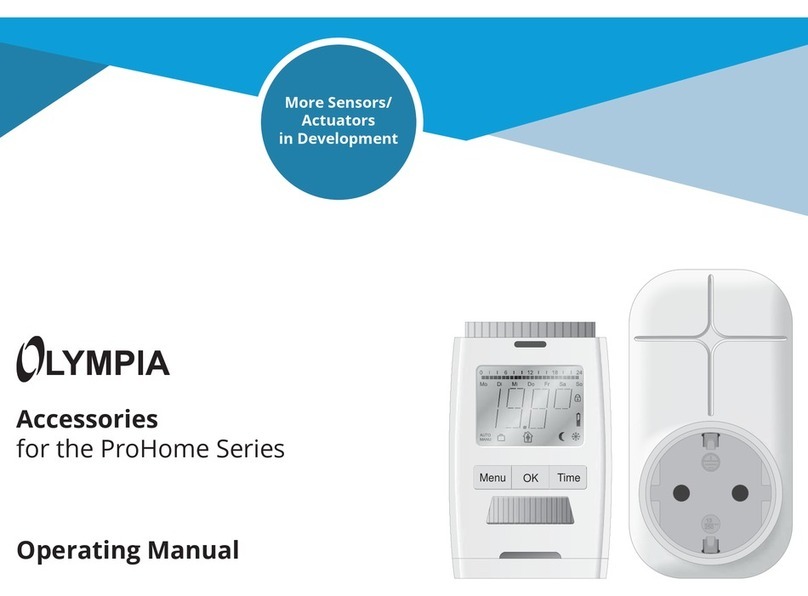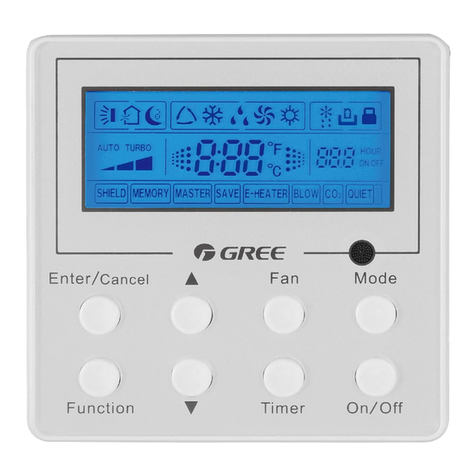BIFFI ALGAS-QA EAC User manual

Installation, Operation and Maintenance Manual
MAN616_EAC Rev. 5
July 2020
Bif ALGAS-QA EAC
“Quick Acting” Spring-Return Pneumatic Actuator
Copyright © Bif. The information in this document is subject to change without notice. Updated data sheets can be obtained from our website www.bif.it or from your nearest Bif Center:
Bif Italia s.r.l. - Strada Bif 165, 29017 Fiorenzuola d'Arda (PC) – Italy PH: +39 0523 944 411 – bif_italia@bif.it

July 2020
Installation, Operation and Maintenance Manual
MAN616_EAC Rev. 5
Revision Details
Revision Details
Revision Details
Rev. Date Description Prepared Checked Approved
5 July 2020 General update (Migration to new template)
4March 2018 Updated Section 2.2 Ermanni Oreci Vigliano
3January 2017 Updated applicable regulation
(Section 1.1.1 and 1.2) Ermanni Oreci Vigliano
2 April 2016 Updated applicable regulation (Section 1.1.1) Ermanni Oreci Vigliano
1 January 2015 Issue document Lazzarini Oreci Vigliano

iTable of Contents
Installation, Operation and Maintenance Manual
MAN616_EAC Rev. 5
Table of Contents
July 2020
Table of Contents
Section 1: General Warnings
1.1.1 Applicable Regulation ........................................................................ 1
1.1.2 Terms and Conditions......................................................................... 2
1.3 Description of the Actuator........................................................................... 3
Section 2: Installation
2.1 Checks to be Carried Out on Receiving the Actuator...................................... 5
2.2 Storage ......................................................................................................... 5
2.3 Assembling the Actuator Onto the Valve....................................................... 6
2.3.1 Types of Assembly .............................................................................. 6
2.3.2 Valve Stem with Vertical Axis ............................................................ 11
2.3.3 Valve Stem with Horizontal Axis........................................................ 15
Section 3: Operation and Use
3.1 Operation Description................................................................................ 17
3.2 Residual Risks............................................................................................. 18
3.3 Operations................................................................................................. 18
3.4 Calibration of the Quick Operation Time .................................................... 19
3.4.1 By-pass Adjustment.......................................................................... 19
3.5 Setting of the Angular Stroke ..................................................................... 21
3.5.1 One Travel-stop-screw Screwed on the End Flange Center
of Pneumatic Cylinder....................................................................... 22
3.5.2 Angular Stroke Setting in Case of Two Travel Stop Screws
in the End Flange of Pneumatic Cylinder ........................................... 24
3.5.3 Stop Screw Screwed on the End Flange of Spring Container.............. 25
3.6 Calibration of Micro-switches (Applicable to Bif Limit Switch Box Model Only).... 27
3.7 Preparation for Start-up .............................................................................. 29
3.7.1 Pneumatic Connections ................................................................... 29
3.7.2 Electrical Connections...................................................................... 29
3.8 Start-up ...................................................................................................... 30
Section 4: Operational Tests and Inspections
Operational Tests and Inspections ............................................................. 31

ii
July 2020
Installation, Operation and Maintenance Manual
MAN616_EAC Rev. 5
Table of Contents
Table of Contents
Section 5: Maintenance
5.1 Routine Maintenance ................................................................................. 32
5.2 Extraordinary Maintenance ........................................................................ 33
5.2.1
Replacement of Cylinder Seals ......................................................... 34
5.2.1.1
Seals Replacement............................................................................ 34
5.2.1.2
Cylinder Reassembling...................................................................... 35
5.3 Lubrication of Mechanism .......................................................................... 38
5.4 Dismantling and Demolition ...................................................................... 39
Section 6: Troubleshooting
6.1 Failure or Breakdown Research .................................................................. 40
Section 7: Layouts and Sectional Drawings
7.1 Parts List for Maintenance and Replacing Procedure................................... 41
Section 8: Spare Parts
8.1 Spare Parts.................................................................................................. 47
Section 9: Date Report for Maintenance Operations
Date Report for Maintenance Operations ................................................... 48

1
Installation, Operation and Maintenance Manual
MAN616_EAC Rev. 5 July 2020
Section 1: General Warnings
General Warnings
Section 1: General Warnings
NOTICE
The manual is an integral part of the machine, it should be carefully read before carrying
out any operation and it should be kept for future references.
1.1 Generalities
Bif Italia s.r.l. actuators are conceived, manufactured and controlled according to the
Quality Control System in compliance with EN-ISO 9001 international regulation.
1.1.1 Applicable Regulation
EN ISO 12100:2010: Safety of machinery – General principles for design –
Risk assessment and risk reduction
2006/42/EC: Machine directive
2014/68/EU: Directive for pressure PED equipment
2014/35/EU: Directive for low voltage equipment
2014/30/EU: Directive for the electromagnetic compatibility
2014/34/EU: Directive and safety instructions for use in hazardous Area
TR TS 004/2011 Customs Union Technical Regulation
(For safety of low voltage equipment)
TR TS 010/2011 Customs Union Technical Regulation
(For safety of equipment and machines)
TR TS 012/2011 Customs Union Technical Regulation
(For safety of equipment operated in explosive atmosphere)
TR TS 020/2011 Customs Union Technical Regulation
(Electromagnetic Compatibility of Technical Products)
TR TS 032/2013 Customs Union Technical Regulation
(For safety of Excess Pressure Equipment)
NOTICE
Bif Italia s.r.l. has taken every care in collecting and verifying the documentation
contained in this instruction and operating manual. Nevertheless Bif Italia s.r.l. does not
provide any guarantees for this instruction manual. Bif Italia s.r.l. will not be responsible
for any mistakes contained in it or for any damage either accidental or due to the use of
this manual. The information herein contained is reserved property of Bif Italia s.r.l. and is
subject to being modied without notice.

2
July 2020
Installation, Operation and Maintenance Manual
MAN616_EAC Rev. 5
Section 1: General Warnings
General Warnings
1.1.2 Terms and Conditions
Bif Italia s.r.l. guarantees that all the items produced are free of defects in workmanship
and manufacturing materials and meet relevant current specications, provided they
are installed, used and serviced according to the instructions contained in the present
manual. The warranty can last either one year from the date of installation by the initial
user of the product, or eighteen months from the date of shipment to the initial user,
depending on which event occurs rst. All detailed warranty conditions are specied in
the documentation forwarded together with the product. This warranty does not cover
special products or components not warranted by subcontractors, or materials that were
used or installed improperly or were modied or repaired by unauthorized staff. In the
event that a fault condition be caused by improper installation, maintenance or use, or by
irregular working conditions, the repairs will be charged according to applicable fees.
The warranty and Bif Italia s.r.l. liability shall lapse in the event that any modication
or tampering whatsoever be performed on the actuator.
1.2 Identication Plate
It is forbidden to modify the information and the marks without previous written
authorization by Bif Italia s.r.l.
The plate fastened on the actuator contains the following information (Figure 1).
Figure 1 Data Plate

3
Installation, Operation and Maintenance Manual
MAN616_EAC Rev. 5 July 2020
Section 1: General Warnings
General Warnings
1.3 Description of the Actuator
“ALGAS-QA” quick acting spring-return pneumatic low pressure actuators, are suitable for
the operation of quarter turn valves (ball valves, buttery valves, plug valves).
These actuators are suitable to achieve a very short time in emergency operation performed
by the spring, independently from the ow capacity of supply lines to the actuator.
In fact the quick operation is requires normally only to bring the valve to the “safe” position.
The operating time can be lower than one second, depending on the process
characteristics, valve size and operating pressure.
The actuator is made up of a weatherproof scotch yoke mechanism transforming the linear
movement of the pneumatic cylinder (or mechanical manual override, if foreseen) and of
the spring into the rotary movement, which is necessary for operation.
The pneumatic cylinder is tted with an integral “quick exhaust valve” directly assembled on
the end ange.
Furthermore the cylinder has a specic dumping system to gradually reduce the speed in
the last portion of the valve stroke, avoiding possible impact damages to the valve trim and
to the actuator itself.
The spring-return pack incorporates up to four springs, fully encapsulated in a factory
welded cartridge: this ensures safety to personnel and simplies assembly. The spring
action can be easily changed in the eld from to close in to open or from to open in to close
(modular design).
The angular stroke of the yoke is adjustable between 82° and 98° by means of the external
mechanical stops screwed into the end ange of the pneumatic cylinder and into the end
ange of the spring-return pack . The cover of the scotch yoke mechanism is arranged for
the assembly of the required accessories (position-transmitter, signaling-limit switches,
positioner, etc.) by means of proper matching units. The above mentioned accessories are
operated by the actuator drive sleeve.
The housing of the scotch yoke mechanism has a ange with threaded holes to x
the actuator to the valve either directly or, if required, with the interposition of an adaptor
ange or a mounting bracket.
The actuator yoke has a hole with keyways suitable for the assembly of an insert bush or a
stem extension. Their internal hole is machined (by BIFFI or at Customer's care), according
to the shape and dimensions of the valve stem.
BIFFI can supply different types of control system following Customer's requirements.

4
July 2020
Installation, Operation and Maintenance Manual
MAN616_EAC Rev. 5
Section 1: General Warnings
General Warnings
Table 1. Single Acting Pneumatic Actuators ALGAS Series - Coding System
The expected lifetime of actuator is approximately 25 years.
Code: ALGAS XXX K-YYYYY -ZZZZ -FS
Actuator series
Actuator model
Scotch yoke version
C Canted
S Symmetric
Spring cartridge model
Cylinder size
Internal diameter in mm
Fail safe action
CL Spring to close
OP Spring to open
Service
-Standard
QA Quick acting

5
Installation, Operation and Maintenance Manual
MAN616_EAC Rev. 5 July 2020
Section 2: Installation
Installation
Section 2: Installation
2.1
Checks to be Carried Out on Receiving the Actuator
1. If the actuator arrives already assembled onto the valve, the settings of the
mechanical stops and of the micro-switches (if existing) has already been made
by the person who assembled the actuator onto the valve. If the actuator arrives
separately from the valve, the settings of the mechanical stops and of the
micro-switches (if existing) must be checked and, if necessary, carried out while
assembling the actuator onto the valve.
2. Check that the actuator has not been damaged during transport. If necessary,
repair all damages to the paint-coat, etc.
3. Check that the model, the serial number of the actuator and the performance
data written on the data-plate are in accordance with those described on the order
acknowledgement, test certicate and delivery note.
4. Check that the tted accessories comply with those listed in the order
acknowledgement and the delivery note.
2.2 Storage
(For handling and lifting procedure, please refer to following Figures: 6, 7 and 8)
The actuators leave the factory in excellent working conditions and with an excellent
nish (these conditions are guaranteed by an individual inspection certicate); in order to
maintain these characteristics until the actuator is installed on the plant, it is necessary to
observe a few rules and take appropriate measures during the storage period.
1. Make sure that plugs are tted in the air connections and in the cable entries.
The plastic plugs, which close the inlets, do not have a weatherproof function, but
are only a means of protection against the entry of foreign matter during transport.
If long-term storage is necessary and especially if the storage is outdoors, metal
plugs must replace the plastic protection plugs, which guarantee a complete
weatherproof protection.
2.
If the actuators are supplied separately from the valves, they must be placed onto
a wooden pallet so as not to damage the coupling ange to the valve. In case of
long-term storage, the coupling parts (ange, drive sleeve, insert bush) must be coated
with protective oil or grease. If possible, blank off the ange by a protection disk.
3. In case of long-term storage, it is advisable to keep the actuators in a dry place
or to provide at least some means of weather protection. If possible, it is also
advisable, to periodically operate the actuator with ltered, dehydrated and
lubricated air; after such operations all the threaded connections of the actuator
and the valves of the control panel (if existing) should be carefully plugged.

6
July 2020
Installation, Operation and Maintenance Manual
MAN616_EAC Rev. 5
Section 2: Installation
Installation
2.3 Assembling the Actuator Onto the Valve
2.3.1 Types of Assembly
For coupling to the valve, the housing is provided with a ange with threaded holes
according to Bif standard tables (SCN6200; SCN6200-1; SCN6201; SCN6201-1).
The number, dimensions and diameter of the holes are made in accordance with ISO 5211,
but for actuator models 0.3 to 6 the holes are drilled on the centreline in order to allow
an easier assembly of an intermediate ange, when required. This intermediate ange
(or spool-piece) can be supplied when the valve ange cannot directly match the actuator
ange in its “standard” conguration. For the biggest actuator models, the actuator ange
can be machined in accordance with the valve ange dimensions.
The yoke has bored with keyways for coupling to the valve stem, the dimensions of which
are according to Bif standard tables SCN6200* and SCN6201*.

7
0.3 240 93 165 M20 4517 127 70 12 75,6
0.9 310 112 254 M16 8 5 19 150 86 14 93,6
1.5 360 144 298 M20 8 6 19 190 112 18 119,0
3430 195 356 M30 8923 200 157 25 167,8
6520 250 406 M36 814 29 260 200 28 212,8
Installation, Operation and Maintenance Manual
MAN616_EAC Rev. 5 July 2020
Section 2: Installation
Installation
Figure 2 Coupling Dimensions for Scotch Yoke Standard Actuators
Drive sleeve
H max
N.4 holes ange N.8 holes ange
N. THREADED HOLES
P.C.D., number and size according to ISO 5211
(but the holes are on centerline instead of
straddle the centerline)
ø d1 max
Flow line
Top view of the scotch yoke mechanism
(actuator shown in closed position)
Models from 0.3 to 6
Dimensions in millimeters
Actuator model Ø d1Ø d2Ø d3Ø d4Nh1h2H max Ø d5WK
Table 2.

8
14 580 250 483 M36 12 10 29 340 175 45 195,8
18 680 290 603 M36 16 12 32 350 200 45 220,8
32 780 290 603 M36 16 12 32 400 220 50 242,8
35 780 315 603 M36 16 11 32 400 240 50 242,8
42 840 310 603 M36 16 12 32 400 220 50 242,8
July 2020
Installation, Operation and Maintenance Manual
MAN616_EAC Rev. 5
Section 2: Installation
Installation
Drive sleeve
H max
N.16 holes ange N.12 holes ange
N. THREADED HOLES
P.C.D., number and size
according to ISO 5211
ø d1 max
Flow line
Top view of the scotch yoke mechanism
(actuator shown in closed position)
Models 14, 18, 32, 35, 42
Figure 3 Coupling Dimensions for Scotch Yoke Standard Actuators
Dimensions in millimeters
Actuator model Ø d1Ø d2Ø d3Ø d4Nh1h2H max Ø d5WK
Table 3.

9
50 800 315 698 M36 24 10 32 430 240 56 264,8
60 840 315 698 M36 24 10 32 430 240 56 264,8
Installation, Operation and Maintenance Manual
MAN616_EAC Rev. 5 July 2020
Section 2: Installation
Installation
Drive sleeve
H max
N.16 holes ange N.12 holes ange
N. THREADED HOLES
Flange sizing according to ISO
ø d1 max
Flow line
Top view of the scotch yoke mechanism
(actuator shown in closed position)
Models 50, 60
Figure 4 Coupling Dimensions for Scotch Yoke Standard Actuators
Dimensions in millimeters
Actuator model Ø d1Ø d2Ø d3Ø d4Nh1h2H max Ø d5WK
Table 4. Size Table

10
July 2020
Installation, Operation and Maintenance Manual
MAN616_EAC Rev. 5
Section 2: Installation
Installation
Table 5. Position
If required, for the standard models size 0.3 to 6, Bif can supply an insert bush with
un-machined bore in accordance with Bif standard table SCN6202. On request the insert
bush bore can be machined by Bif to couple the valve stem, provided its dimensions
match the maximum stem acceptance of the bush according to Bif table TN1005,
enclosed. The particular execution of the ange and bushing allow the actuator to be
rotated by 90° in 4 different positions according to the following gure:
Figure 5 Insert Bush + Intermediate Coupling Flange
Position 2 Position 3 Position 4
Rotate insert-bush 180° around
vertical-standard position (1)
Rotate insert-bush 180° around axis
A-A, from position 2
Rotate insert-bush 180° around axis
A-A from position 1
Insert bush turned upside down
The Bif insert bush with 2 external keys at 45° allows to position the keyway for the valve
every 90°. Consequently actuator can be mounted in 4 positions at 90° on top of the valve.
For biggest actuator models, the bore of the yoke can be machined according to the
dimensions of valve stem.
Housing Drive sleeve
Snap ring
Adaptor ange
Standard position 1
Position 2 Position 3 Position 4
Flow line
Drive sleeve
Insert bush
Insert bush
N.4 holes ange N.8 holes ange

11
Installation, Operation and Maintenance Manual
MAN616_EAC Rev. 5 July 2020
Section 2: Installation
Installation
2.3.2 Valve Stem with Vertical Axis
NOTICE
The lifting and handling of the actuator must be done by qualied personnel and in accordance
with the laws and regulations in force. Avoid the lifted actuator to be hung above the personnel.
! WARNING
The actuator must be lifted by means of a suitable lifting apparatus. The weight of the
actuators is indicated in the technical documentation attached to the equipment itself.
For lifting and moving the actuator, use only hooks tted with safety latch, like the one,
for example, shown in Figure 6.
Figure 6 Example of hook with safety latch
Figure 7 Lifting Points for PLAS Actuators
Lifting points: 1-2 (mandatory), 3 (balancing)

12
July 2020
Installation, Operation and Maintenance Manual
MAN616_EAC Rev. 5
Section 2: Installation
Installation
Lift ALGAS-QA actuators (pneumatic spring-return) by means of the proper lifting points
represented and indicated on actuator by sticking labels. Also refer to gures 8 for lifting
points positions.
! WARNING
Do not use the lifting eyelets on actuator to lift valve + actuator assembly
Spring cartridge
Lifting eyelet
Pneumatic cylinder
Lifting eyelet
lifting point applicable for ALGAS
models: 3-6-14-18-32-50-80
Lifting eyelet
lifting point applicable for ALGAS
models: 0.3-0.9-1.5
Figure 8 Lifting Points for ALGAS-QA
• For lifting unbalanced loads, use ropes of different lengths or chains with
adjustable length.
• Check each time the conditions of all lifting equipment used and discard it if not in
perfect working order.
• Do not knot or twist the ropes so as not to reduce the lifting capacity or produce
torsional effects on the load being lifted.
• Use the utmost caution and remain at a safe distance from lifted actuator unless
absolutely necessary; do not stand or pass under suspended loads.
• Pay attention in putting under tension the ropes to prevent the load shifting sideways
in an uncontrolled manner.
• Use slings of such length that the angles of the leg from vertical are as narrow as
possible (αMAX < 20°).
• During handling, do not transport the suspended actuator above staff members in
charge of the operation.

13
Installation, Operation and Maintenance Manual
MAN616_EAC Rev. 5 July 2020
Section 2: Installation
Installation
Figure 9 Lifting Points for ALGAS-QA
! WARNING
Any lifting method different from what described above is strictly forbidden.
Bif reject any responsibility for damages to goods or injuries to persons coming from
wrong lifting operations.
The actuator can be assembled onto the valve ange either by using the actuator-housing
ange with threaded holes, or by the interposition of an adaptor ange or a spool piece.
The actuator drive sleeve is generally connected to the valve stem by an insert bush or a
stem extension.
The assembly position of the actuator, with reference to the valve, must comply with the
plant requirements (cylinder axis parallel or perpendicular to the pipeline axis).
To assemble the actuator onto the valve proceed as follows:
1. Check that the coupling dimensions of the valve ange and stem, or of the
relevant extension, meet the actuator coupling dimensions.
2. Bring the valve to the position related to the actuator spring operation.
3. Lubricate the valve stem with oil or grease in order to make the assembly easier.
Be careful not to pour any of it onto the ange.
4. Clean the valve ange and remove anything that might prevent a perfect
adherence to the actuator ange and especially all traces of grease, since the
torque is transmitted by friction.
5. If an insert bush or stem extension for the connection to the valve is supplied
separately, assemble it onto the valve stem and fasten it by tightening the proper
stop dowels.
6. Bring the actuator to the position caused by the spring operation.
Lifting lugs to be used for the
actuator only. Do not lift valve and
actuator together.
Do not disassemble top or bottom
cover spring loaded.
Porential electrostatic charge hazard.
Bif is not liable for any personel
injury due to incorrect use.
Refer to IOM.

14
July 2020
Installation, Operation and Maintenance Manual
MAN616_EAC Rev. 5
Section 2: Installation
Installation
7. Connect a sling to the support points of the actuator and lift it: make sure the
sling is suitable for the actuator weight. When possible, it is easier to assemble the
actuator to the valve if the valve stem is in the vertical position. In this case the
actuator must be lifted while keeping the ange in the horizontal position.
8. Clean the actuator ange and remove anything that might prevent a perfect
adherence to the valve ange and especially all traces of grease.
9. Lower the actuator onto the valve in such a way that the insert bush, assembled
on the valve stem, enters the actuator drive sleeve. This coupling must take place
without forcing and only with the weight of the actuator. When the insert bush has
entered the actuator drive sleeve, check the holes of the valve ange. If they do not
meet with the holes of the actuator ange or the stud bolts screwed into them,
the actuator drive sleeve must be rotated; feed the actuator cylinder with air at
proper pressure, indicated on data-sheet for actuator.
10. Tighten the nuts of the connecting stud bolts evenly with the torque prescribed in
the table. The stud bolts must be made of ASTM A320 L7 steel; the nuts must be
made of ASTM A194 grade 2 steel.
11. If possible, operate the actuator to check that it moves the valve smoothly.
Thread size Recommended tightening Torque (Nm)
M8 20
M10 40
M12 70
M14 110
M16 160
M20 320
M22 420
M24 550
M27 800
M30 1100
M33 1400
M36 1700
Table 6. Torque Table

15
Installation, Operation and Maintenance Manual
MAN616_EAC Rev. 5 July 2020
Section 2: Installation
Installation
2.3.3 Valve Stem with Horizontal Axis
The actuator can also be lifted to assemble directly onto the valve with stem with
horizontal axis. To make a correct lifting procedure proceed as follow:
1. Connect properly the actuator lifting points 1 with chains, and connect by suitable
slings the support brackets 2 and 3.
Lifting eyelets (1)
Support brackets (2)
Support brackets (3)
Lifting eyelets (1)
Figure 10

16
July 2020
Installation, Operation and Maintenance Manual
MAN616_EAC Rev. 5
Section 2: Installation
Installation
Figure 11 PLAS MHP Without Control System
2. Balance the weight and lift the actuator until to make possible the rotation of
actuator in its nal mounting position, with cylinder on top, or spring container
placed on top, as showed in the following images:
3. Clean the actuator ange and remove anything that might prevent a perfect
adherence to the valve ange and especially all traces of grease.
4. Lift the actuator near to the valve in such a way that the insert bush, assembled
on the valve stem, enters the actuator drive sleeve without forcing the coupling.
When the insert bush has entered the actuator drive sleeve, check the holes of
the valve ange. If they do not meet with the holes of the actuator ange or the
stud bolts screwed into them, the actuator drive sleeve must be rotated; feed the
actuator cylinder with air at proper pressure, indicated on data-sheet for actuator.
5. Tighten the nuts of the connecting stud bolts evenly with the torque prescribed in
the table. The stud bolts must be made of ASTM A320 L7 steel; the nuts must be
made of ASTM A194 grade 2 steel.
6. If possible, operate the actuator to check that it moves the valve smoothly.
This manual suits for next models
2
Table of contents
Other BIFFI Controllers manuals
BIFFI
BIFFI ICON3000 Series User manual
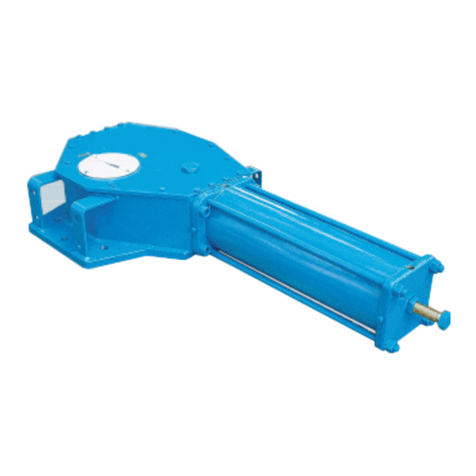
BIFFI
BIFFI OLGA Series User manual

BIFFI
BIFFI HLA Series User manual
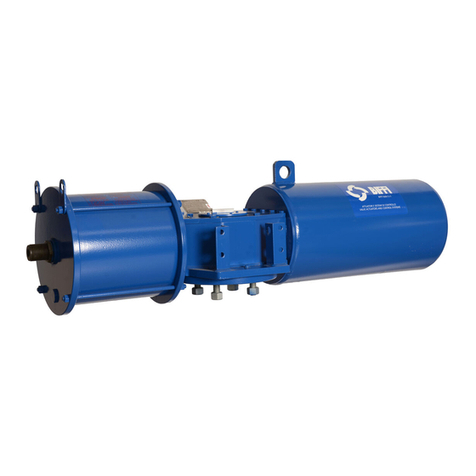
BIFFI
BIFFI ALGAS User manual
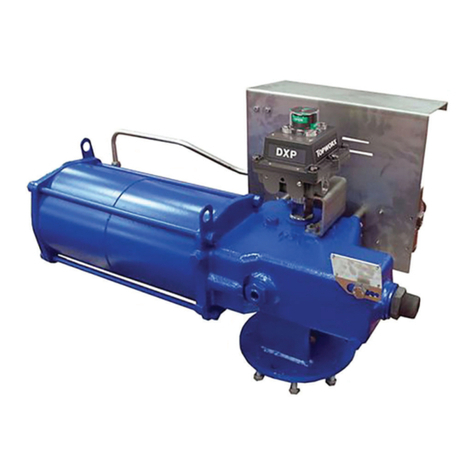
BIFFI
BIFFI RPS Series User manual
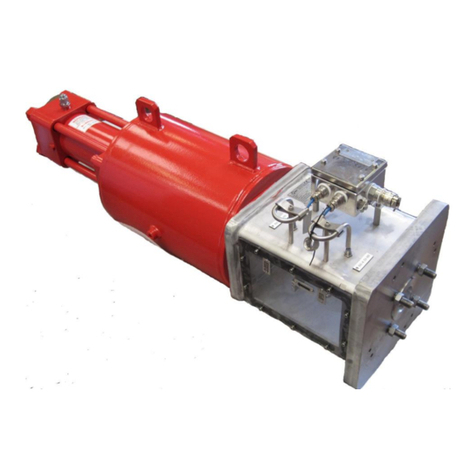
BIFFI
BIFFI HLAS User manual
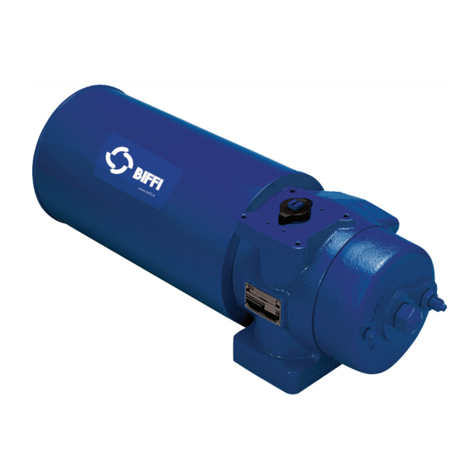
BIFFI
BIFFI FCB Series Operating instructions
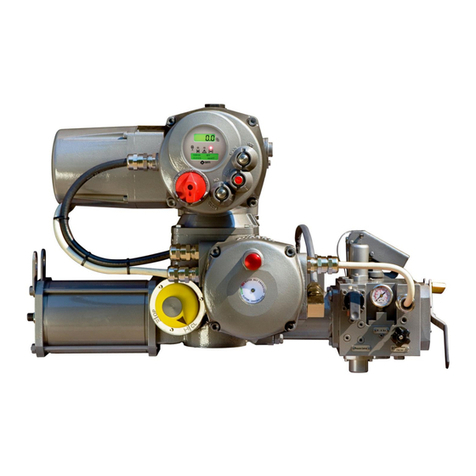
BIFFI
BIFFI EFS2000v4 Parts list manual
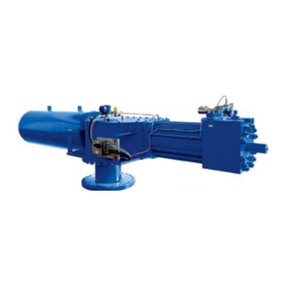
BIFFI
BIFFI OLGAS-H User manual

BIFFI
BIFFI GILS User manual


